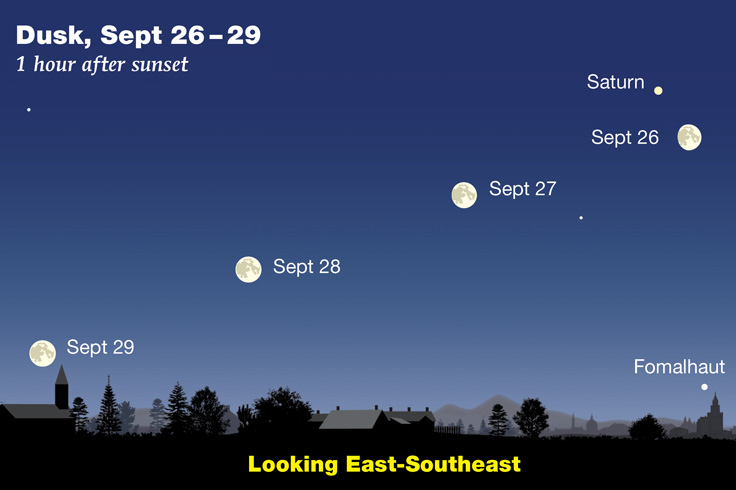Daylight hours are getting shorter in the Northern Hemisphere, which means the hours for stargazing are getting longer throughout September! So stream or download this month’s Sky Tour astronomy podcast for lots of great tips on what you can see this month in the evening sky.

Listen Here:
Podcast: Play in new window | Download
Subscribe: Apple Podcasts | Google Podcasts | Spotify | Email | RSS | More
If you’re obsessed with calendars, then you probably already know exactly when the September solstice occurs. But for the rest of us, the equinox falls on September 23rd at 2:50 a.m. Eastern Daylight Time. Now, that might seem late, because this celestial benchmark usually falls on the 22nd. But remember that we’re not that far from 2024, which is a leap year. So next year this equinox will occur early on the 22nd. In case you’re curious, an equinox hasn’t fallen on September 21st since 1931, and it won’t occur on September 24th until the year 2092.
Since last month featured two full Moons, the second falling on the night of August 30th, early September will feature Moon-free skies in early evening. Last quarter falls on September 6th, new Moon on the 14th, and first quarter on the 22nd. Full Moon follows on September 29th. This is the Harvest Moon, the name traditionally given to the full Moon closest to the equinox. At this time of year, the nearly full Moon rises only about a half hour later each succeeding evening, as opposed to the usual 50 minutes. This gives farmers a little extra late-evening light for harvesting their crops, hence the name.

Sky & Telescope
If you’re looking for planets, there’s one that’s obvious in the evening sky after sunset, one that shows up later in the evening, and two that you can see before dawn. As evening twilight deepends, swing around to the direction opposite of where the Sun set, and you’ll spot Saturn low in the southeast. Saturn was at opposition, opposite the Sun in the sky, on August 27th. So early this month it’s just about as bright as it’ll be all year. And what about finding those three other planets? You’ll have to listen to this month’s Sky Tour podcast to find out which ones are in view and where/when to look for them!
Summer might be ending astronomically, but summer’s stars are still arrayed in the evening sky. Topping the list is the trio of bright stars collectively called the Summer Triangle. Finding them is easy, even if your backyard is hopelessly awash with light pollution. Lift your gaze way up to find a bright star that’s almost directly overhead. That’s Vega (VAY-guh — or some say VEE-guh). It’s in the constellation Lyra (LIE-ruh), the Lyre, and it’s relatively close as stars go, just 25 light-years away.
If you’re looking up at Lyra, you should also be seeing the other two corners of the Summer Triangle. One is to the south of Vega, by about three times the width of your fist. That’s Altair, the main star in the constellation of Aquila, the Eagle. The name Altair, an Arabic word, means “the flying eagle” and has been in use since medieval times.
The third star is about two fists from Vega toward east. That star is called Deneb, a Westernized version of the Arabic phrase for “hen’s tail.” Deneb does mark the tail of a bird, but it’s a graceful swan, the constellation Cygnus. At the swan’s other end is a medium-bright star called Albireo, and this also is an interesting Arabic name — to learn about it, download the podcast!.
There’s lots more going on overhead in the nighttime skies of September. For example, did you know that two small constellations lie almost entirely inside the Summer Triangle? To track them down — and for lots of great stargazing tips — download or stream September’s Sky Tour astronomy podcast. It’s just 12 minutes long — perfect for a quick introduction to the celestial happenings this month.
 0
0
Comments
You must be logged in to post a comment.